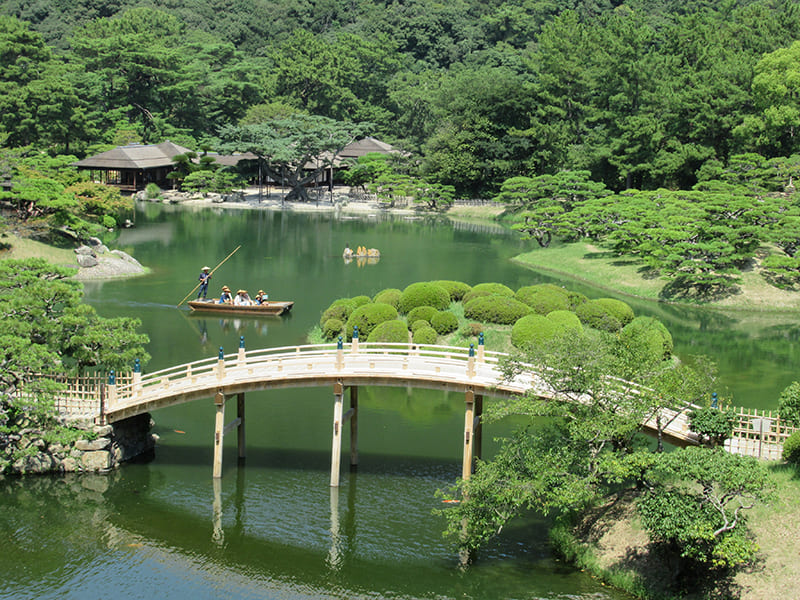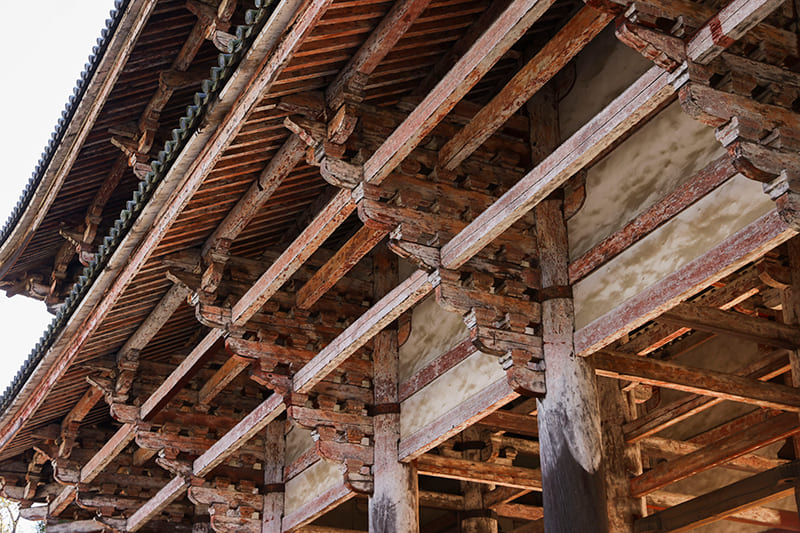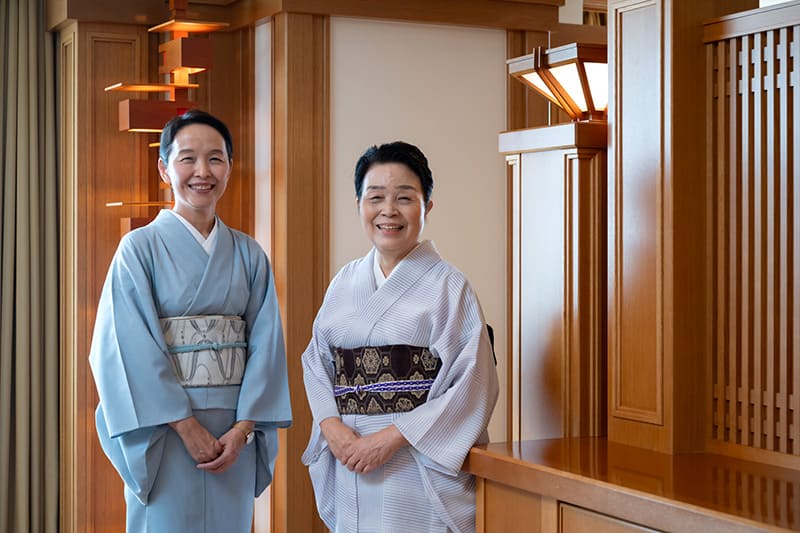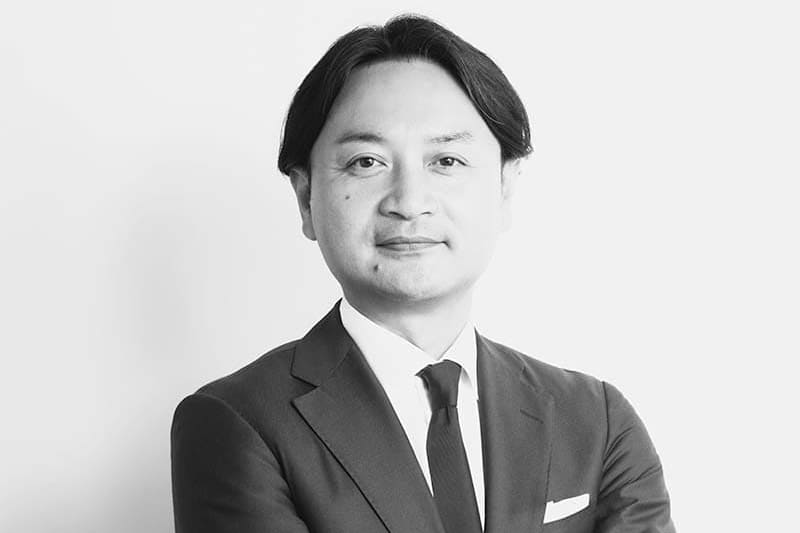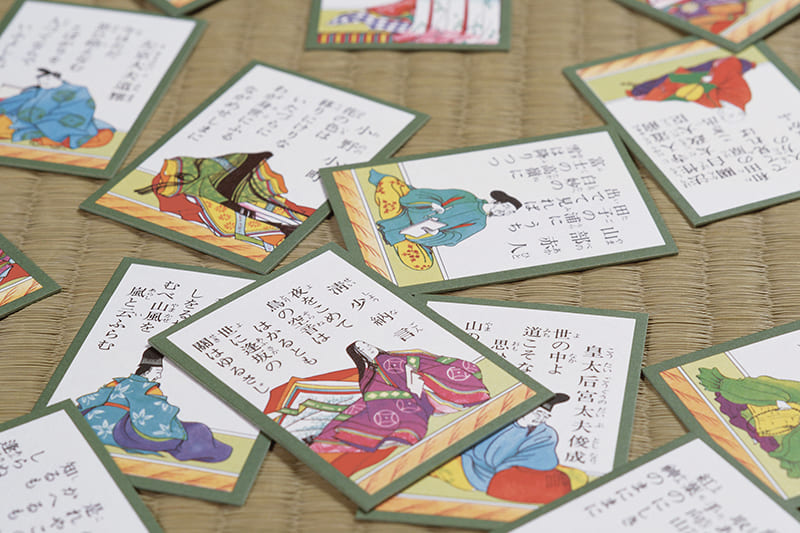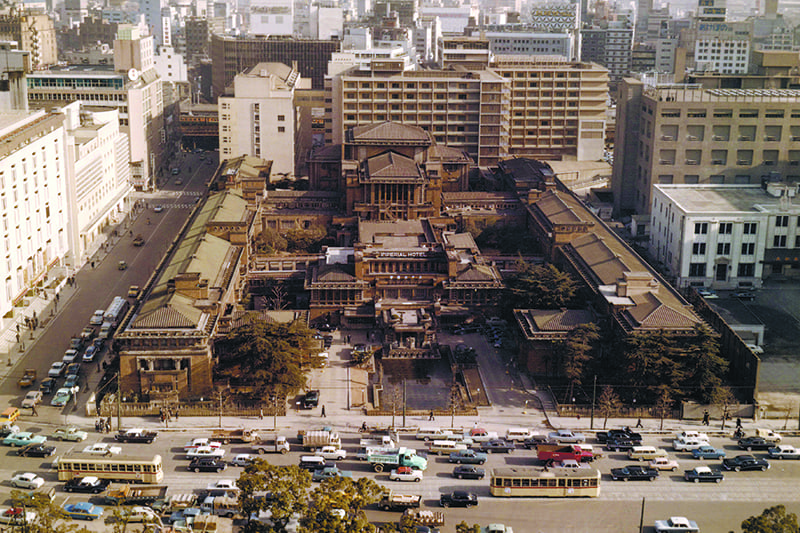August 25, 2023
Reizei family, custodians of waka, soul of Japan
INTERVIEW
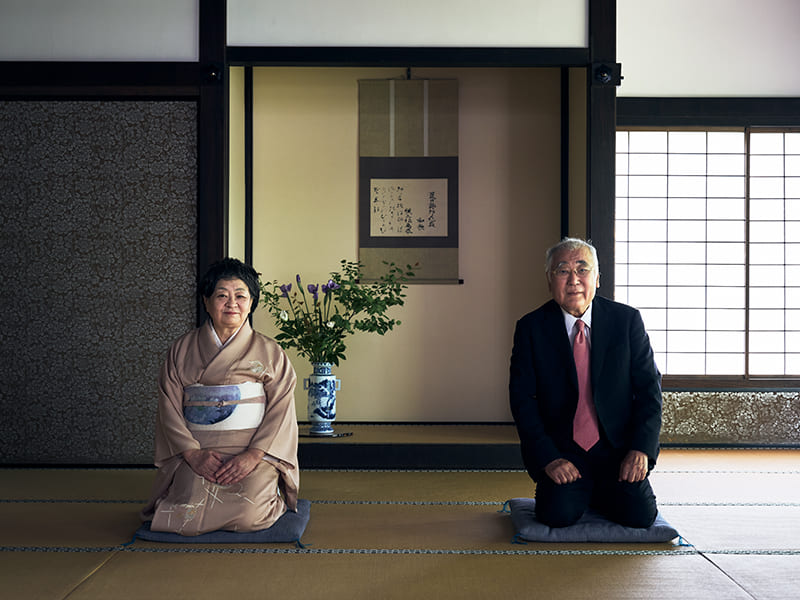
PHOTOS: KOUTAROU WASHIZAKI
THE REIZEI FAMILY
A “house of waka poetry” whose ancestors include the poets Fujiwara no Shunzei and Fujiwara no Teika, both of whom were chosen to compile imperial anthologies of waka poetry during the Heian and Kamakura periods. A grandson of Teika named Tameie first adopted the family name of Reizei. The family is currently led by Tamehito Reizei, a position he gained when he married Kimiko, the eldest daughter of the family’s 24th head, Tameto Reizei. In addition to inheriting the Reizei style of poetry and the administration of several important annual rituals, the family is custodian of ancient documents and classical manuscripts, including five National Treasures and 48 Important Cultural Properties, as well as their estate on the north of the Kyoto Imperial Palace; it is now the only kuge (court noble) house in Japan that remains in its original form (and is itself an Important Cultural Property). The Obunko storehouse, dating back to the Edo Period, is considered a sacred place on the estate, and even today only the family head and heir are allowed to enter. Tameto’s grandson Nagisa Nomura is scheduled to succeed him.
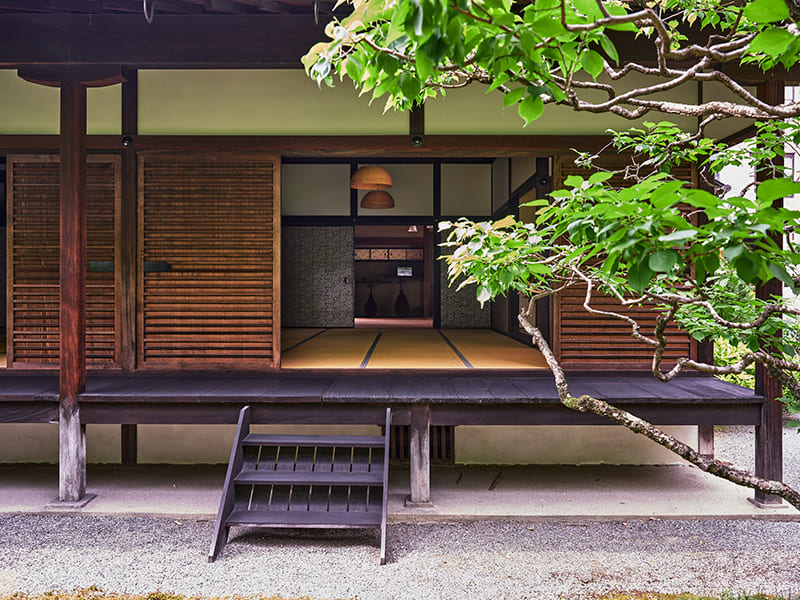
Ask a Japanese person what bird they associate with plum blossoms, and they will immediately answer “uguisu” (bush warbler). Moreover, the two together will make them think of spring. As a motif they can be seen in paintings, kimonos, tableware and even crafts like tea ceremony utensils. “This is the beauty of Japanese kata, or ‘form,’ which has its roots in waka poetry,” explained Tamehito Reizei, the current head of the Reizei family.
Waka, an ancient form of poetry consisting of five lines in a meter of 5-7-5-7-7 syllables, played a foundational role in the development of what is now known as the Japanese spirit, influencing everything from the tea ceremony, noh and incense to the modern Japanese lifestyle.
The Reizei family, whose estate is located on the north side of the Kyoto Imperial Palace, has been involved with waka poetry for 800 years. Their ancestors include Fujiwara no Shunzei and Fujiwara no Teika, revered poets during the Heian (794-1185) and Kamakura (1185-1333) periods. Waka was considered essential learning for the emperors and shoguns who ruled the nation, and as a family of the noble class, the members of the Reizei family have long taken responsibility for it in several ways. The first is their upholding of the Reizei school of poetry. Every month, they hold a waka kai poetry gathering for both teaching and researching waka. This includes the so-called kata, formal rules that govern the way the poetry is composed and recited, plus related etiquette.
“Waka is different from the art that arrived from the West after the Meiji Restoration, which is all about the free expression of the self,” Tamehito explained. “Things that are expressed in kata are not necessarily real. Japanese people immediately understand ‘bush warbler in a blossoming plum tree,’ but few have seen the real thing. Bush warblers also exist in seasons other than spring, and yet ever since the Heian Period’s ‘Kokin Wakashu,’ an anthology of waka poems, they have symbolized spring. Japanese people understand this not through logic, but as a feeling. This same feeling is what we mean when we say something is very Japanese, and it seems difficult for foreigners to understand.”
His wife, Kimiko, the eldest daughter of the 24th head of the family, Tameto Reizei, explained it this way: “Waka was originally something that was dedicated to the gods. In the old days, festivals were a function of government, and the emperor played a role in line with the unity of church and state. People prayed for a good harvest or health, and beautiful words thought to be pleasing to the gods were selected and refined. The waka forms developed as a result.”
The second role played by the Reizei family is to administer several important annual poetry rituals. Highly formalized, they are held at certain times throughout the year, such as New Year’s Day, Setsubun on Feb. 3 to herald the coming of spring, and the summer festival Tanabata (once called Kikoden) on July 7.
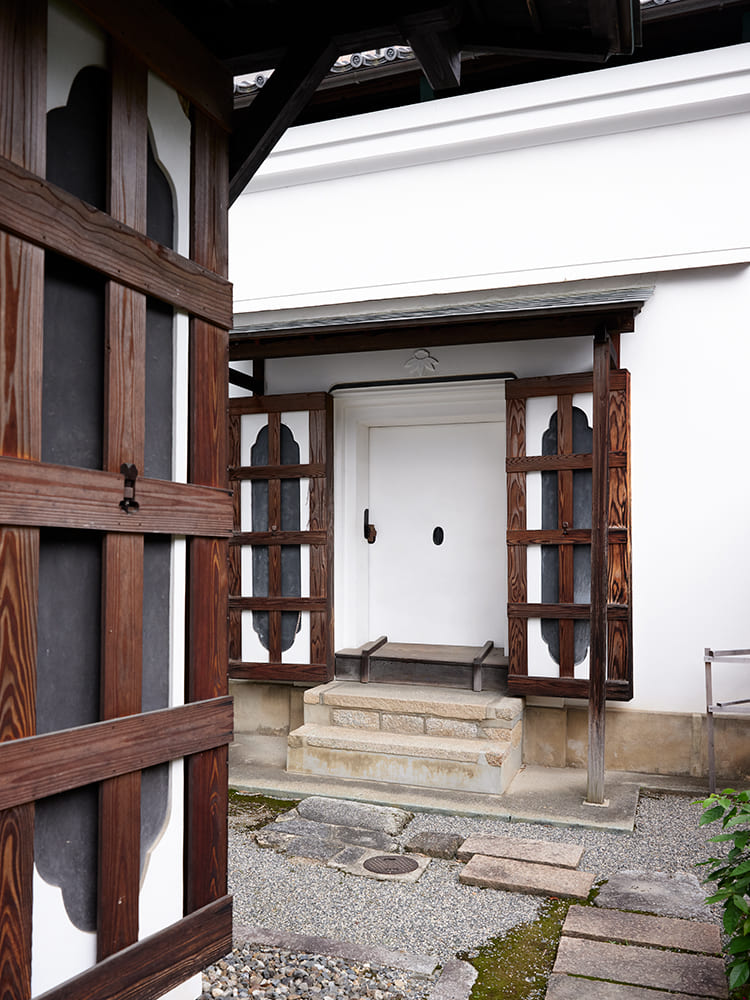
“From the Heian Period until the Meiji Era (1868-1912), the world of kata developed in the imperial court. Clothing and etiquette were decided according to one’s rank and station, and knowledge of these rules was itself seen as proof of nobility,” Tamehito said. “The diary ‘Meigetsu-ki,’ which was written by our ancestor Fujiwara no Teika, records that lifestyle in detail, and attests to his passing the kata down to his descendants.”
In addition to intangible cultural assets such as waka and annual rituals, the family is also responsible for many tangible cultural assets. These include five National Treasures, including “Meigetsu-ki,” and 48 Important Cultural Properties. The family residence itself, including the Obunko storehouse, where artifacts are kept, has also been designated an Important Cultural Property. While the costs of upkeep for these is significant, very little support is received from the national and local governments, meaning the majority must be paid for by the family. When the peerage system was abolished at the end of World War II, the family lost what government income it had, and so subsequent family heads have had to take jobs in the private sector.
Having poured their own resources into preserving these cultural assets, the associated tax burden soon became unmanageable. At one time the tax office even advised the family to sell the property. In the end, though, they established a “public interest incorporated foundation,” the Reizei Family Shiguretei Bunko Foundation, in 1981. The foundation now carries on the long family mission of preserving both its intangible and tangible cultural assets — a mission their ancestors upheld even during the Meiji Restoration in 1868, when many other noble families chose to follow the emperor when he relocated to the new capital city of Tokyo. Still, fundraising remains an issue. Conservation costs for the ancient books and manuscripts run to about ¥20 million ($140,000) every year. And the ongoing construction of a new storehouse, Kita no Okura, is expected to cost ¥300 million, which the Reizei family must pay itself.
“I asked the Agency for Cultural Affairs for the government to bear the cost, but they declined. After all, there are no votes in supporting education and cultural heritage,” Tamehito said.
As a result, part of the cost must be met by crowdfunding, and most of it is dependent on donations from individuals, companies and other organizations. So fundraising is a never-ending task. Meanwhile, although the Agency for Cultural Affairs initially recommended they build an air-conditioned concrete building for the Kita no Okura, the Reizei family chose traditional mud-wall construction.
“Concrete buildings don’t last for 100 years, so we would have to pay for renovations every few decades. In addition, it would require air conditioning, which uses power, and that would present a challenge if the power were cut off,” Kimiko explained. “On the other hand, we know that earthen storehouses last for 400 years, with at least five known examples that have survived since the Edo Period. They have excellent fire resistance and durability, and self-breathing earthen walls keep the internal humidity and temperature within a natural range, making them ideal for storing cultural assets. Mud-wall construction techniques are also used in making castle walls, and so there is the added benefit of preserving those techniques for other applications at a time when they are rapidly being lost.”
Conscious of her family’s long tradition of preserving waka poetry, Kimiko has recently made visits to more than 10 high schools in Kyoto Prefecture to pass on her knowledge.
“In our postwar education system, ‘being different from others’ is seen as a virtue, but with kata everyone is the same. So it now seems novel to young people. The kata are like a form of communal consciousness, and so people in the same space can feel the same way at the same time. When we hear of plum blossoms and bush warblers, we all think: spring, happiness, auspiciousness. This commonality creates a sense of security and unity. I believe it also serves as a force that has supported Japan not just in its culture but also its economy,” she said.
It seems clear that knowledge of the waka poetry that has been handed down from ancient times is essential for understanding the modern Japanese spirit — and Japan as a whole.
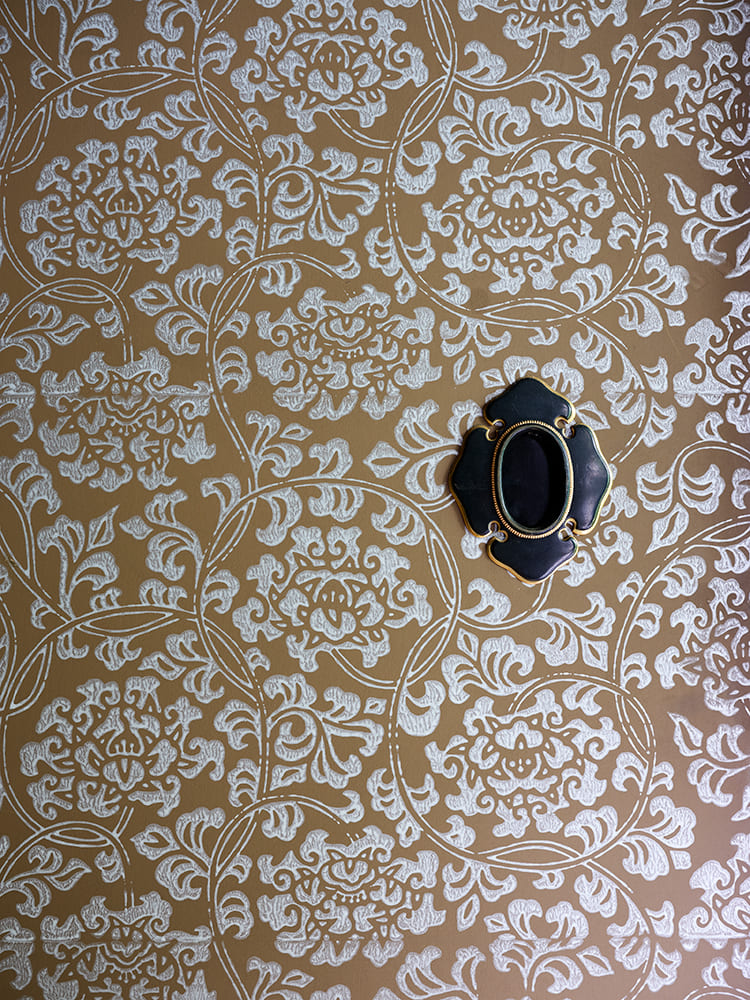
冷泉家~日本人の原点、和歌を守り伝える800年。
日本人であれば、「梅」の枝に来る鳥といえば、「鶯」と答えるだろう。そして、季節は春だと誰もが思い描く。「それが和歌に始まる日本の“型”の美なのです」。冷泉家二十五代当主、冷泉為人は語る。
日本人の精神に多大な影響を及ぼしてきた和歌を800年にわたり家業としてきたのが、冷泉家だ。冷泉流歌道、年中行事など無形の文化財の継承に加え、家に伝わる国宝や重要文化財などの維持と管理にかかる費用の大半を負担しながら請け負ってもいる。それは日本の根幹にある文化を継承する家としての責任感からだ。「戦後の教育は“人と違うこと”をよしとしていますが、型というのはみんな一緒。型という共通認識があるから、同じ空間にいる人が一斉に同じ気分になれる。そこに、みんな一緒という安心感や団結力が生まれるわけです。それは文化面のみならず、経済面でも日本を支える力になってきたのではないでしょうか」(冷泉貴実子)。和歌を知ることは現代における日本人の精神、ひいては日本という国への理解に役立つはずだ。
Return to Sustainable Japan Magazine Vol. 27 article list page

